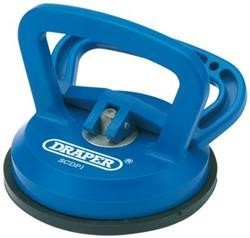Frustrated with a large dent in your car? You might be considering a DIY fix with a car large dent removal tool. These tools promise a quick and inexpensive solution, but do they live up to the hype? This guide dives deep into the effectiveness of car large dent removal tools, exploring their types, usage, limitations, and when professional help is necessary.
Car dent repair kits aim to pull dents outward from the exterior, contrasting with professional Paintless Dent Removal (PDR) techniques that push from the inside. While readily available and affordable, the efficacy of these tools depends on several factors. Let’s explore further.
Types of Car Large Dent Removal Tools
Primarily, two types of dent pullers dominate the market:
Suction Dent Pullers:
These tools utilize suction to pull the dent outward. Think of them as powerful plungers for your car. They work best on shallow, smooth dents on flat surfaces.
Glue Dent Pullers:
These kits involve gluing a pulling tab to the dent and using a pulling mechanism to extract the dent. They offer more control and can handle slightly larger dents compared to suction pullers. Variations include slide hammer kits that use a weight to generate pulling force.
Effectiveness of Car Large Dent Removal Tools: Do They Work?
The success of dent pullers hinges on several factors, primarily the size, depth, and location of the dent.
- Shallow vs. Deep Dents: Dent pullers primarily work on shallow dents. Deep dents, often with creased metal, require professional intervention.
- Flat vs. Curved Surfaces: Flat surfaces lend themselves better to DIY dent repair. Curved areas make it challenging to achieve uniform pulling force.
- Location of the Dent: Dents located on reinforced areas or near edges prove difficult for DIY kits.
- User Skill: Experience plays a crucial role. Improper technique can exacerbate the damage.
Pros and Cons of Using Car Large Dent Removal Tools
Pros:
- Cost-Effective (Potentially): DIY kits offer a cheaper initial investment compared to professional repair.
- Convenience: You can attempt the repair at your own pace and avoid leaving your car at a shop.
- Sense of Accomplishment: Successfully removing a dent yourself can be rewarding.
Cons:
- Time-Consuming: The process requires patience and multiple attempts, especially for larger dents.
- Imperfect Results: Achieving a flawless finish is unlikely. Minor imperfections often remain.
- Risk of Further Damage: Incorrect application can worsen the dent, potentially leading to higher repair costs.
- Limited Applicability: Not all dents are suitable for DIY repair. Deep, complex dents necessitate professional expertise.
When to Consult a Professional
While DIY dent removal can be tempting, certain situations demand professional attention:
- Large, Deep Dents: These require specialized tools and techniques beyond the scope of DIY kits.
- Dents with Paint Damage: Pulling the dent may worsen existing paint issues.
- Dents on Complex Curves: Achieving uniform pressure and avoiding further damage is challenging on curved surfaces.
- Lack of Experience: If you’re unsure about the process, seeking professional help prevents potential mishaps.
Conclusion: Car Large Dent Removal Tools – A Cautious Approach
Car large dent removal tools can be effective for minor, shallow dents on flat surfaces. However, they require patience, careful technique, and realistic expectations. For larger, complex dents, or if you’re unsure about the process, consulting a professional body shop ensures a proper and lasting repair, ultimately saving you time, money, and potential frustration. A professional repair also often comes with a warranty, providing peace of mind and assurance of a quality repair.


